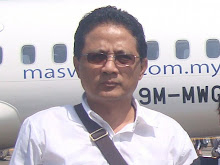Sunday, May 27, 2012
The long road to ASEAN rights charter
Hafid Abbas, Jakarta
Wed, 05/23/2012 7:58 AM
A- A A+ Klipping The Jakarta Post
Since the ASEAN Charter came into force on Dec. 15, 2008, some monumental follow-up actions have been made to promote and protect human rights, including the establishment of the ASEAN Human Rights Body (AHRB).
Indeed, the establishment of this body had been initiated since the Joint Communiqué at the ASEAN Ministerial Meeting (AMM) in Singapore on July 23-24, 1993, which adopted a commitment to the establishment of an ASEAN human rights mechanism.
In the two decades since the Joint Communiqué was issued, it is likely the appropriate momentum to adopt the ASEAN Human Rights Declaration (AHRD) as a triggering factor to promote and protect human rights in the region.
As mandated by Article 4.2 on its Terms of Reference, the ASEAN Intergovernmental Commission on Human Rights (AICHR) is responsible for developing an AHRD. However, there has been no significant progress despite that mandate. The following reflection could be a comparative input to avoid such stagnation.
First, AHRD and other regional human rights instruments have to be made realistic to address the existing challenges facing rights in the region. ASEAN has been identified the most diverse part of the world in various dimensions.
In terms of religion, for example, Indonesia is a predominantly Muslim country (86.1 percent of population), while Thailand has a Buddhist majority (94.6 percent) and the Philippines is Roman Catholic (81 percent). In terms of territory and population, Brunei’s size is about 5,700 square kilometers occupied by over 300,000 people, while Indonesia is about 2 million sq km with more than 240 million people.
Similarly, their government systems vary, with Myanmar still under a military regime, Malaysia being a constitutional monarchy and Vietnam a communist state. Other extreme differences include languages, with Malay so much different from Thai, Chinese and Tagalog.
Therefore, potential for suspicion among the states remain in their dynamic interactions. Under these circumstances, it is a utopia to make ASEAN member states voice human rights in the same tone.
In comparison, the European Union (EU) had started human rights from the same tone which was largely triggered by two concerns. First, the genocide of approximately 6 million Europeans during World War II, a systematic state-sponsored murder by Nazi Germany, led by Adolf Hitler throughout Nazi-occupied territory.
Second, the human rights convention was a response to the growth of communism in Eastern Europe and designed to protect member states of the Council of Europe from communist subversion. These common denominators prompted the EU to adopt its human rights convention.
In a similar way, centuries of colonialism and apartheid policy appeared to be Africa’s common denominators to the African Charter on Human and People’s Rights, which then lead to the establishment of a regional human rights system.
For ASEAN, its common denominators to human rights remain in a grey area, weakening its social cohesion to human rights if not decaying the commitment from within.
Second, the AHRD and other regional human rights instruments have to adopt flexibility to address the diverse interests on human rights in the region.
It is a paradoxical reality that some countries in the region resist the universality of human rights over fears it could deteriorate their development. Mahathir Mohammad and Lee Kwan Yew, for examples, led Malaysia and Singapore, respectively, with the exclusion of human rights from Asian values.
In this context, it would be less controversial to make the declaration as a road map for regional human rights development for years to come, as has been proposed by the Secretary General of ASEAN, Surin Pitsuwan.
I think this paradox is the source of suspicion among NGOs, which have called on the AICHR to take necessary steps to ensure a transparent process of the AHRD formulation that involves consultation with civil society organizations in the region.
Third, the AHRD and other regional human rights instruments have to be substantively linked to the spirit of the 1993 Joint Communiqué or even the Bangkok Declaration of 1967. The AICHR could explore, for example, the common denominators to adopt the 1993 Joint Communiqué.
Why could this communiqué lead to various consecutive initiatives, such as a working group on ASEAN Human Rights Mechanisms in 1995, the National Human Rights Institutions establishment (Philippines 1987, Indonesia 1993, Thailand 1998, Malaysia 1999), the adoption of Vientiane Action Program of 2004, the Declaration of Cooperation among the four National Human Rights Institutions of 2007, the signing of the ASEAN Charter in 2007 and the establishment of the AHRB in 2009. This long process could inspire the AICHR to sustain this continuity in drafting the AHRD.
Finally, the AICHR has to immediately map out a common area of concerns to human rights issues prior to the adoption of the AHRD, such as border conflicts, smuggling, trafficking of women, children and drugs, illegal smuggling, migrant workers, money laundering and terrorism. The AHRD and other regional human rights instruments have to be unifying factors to address those common concerns.
The absence of transparency and participation of civil society in the drafting process of the AHRD will mark a setback for human rights promotion and protection in the region.
The writer is a professor at State University of Jakarta and former director general of human rights at the Law and Human Rights Ministry.
Subscribe to:
Post Comments (Atom)

No comments:
Post a Comment